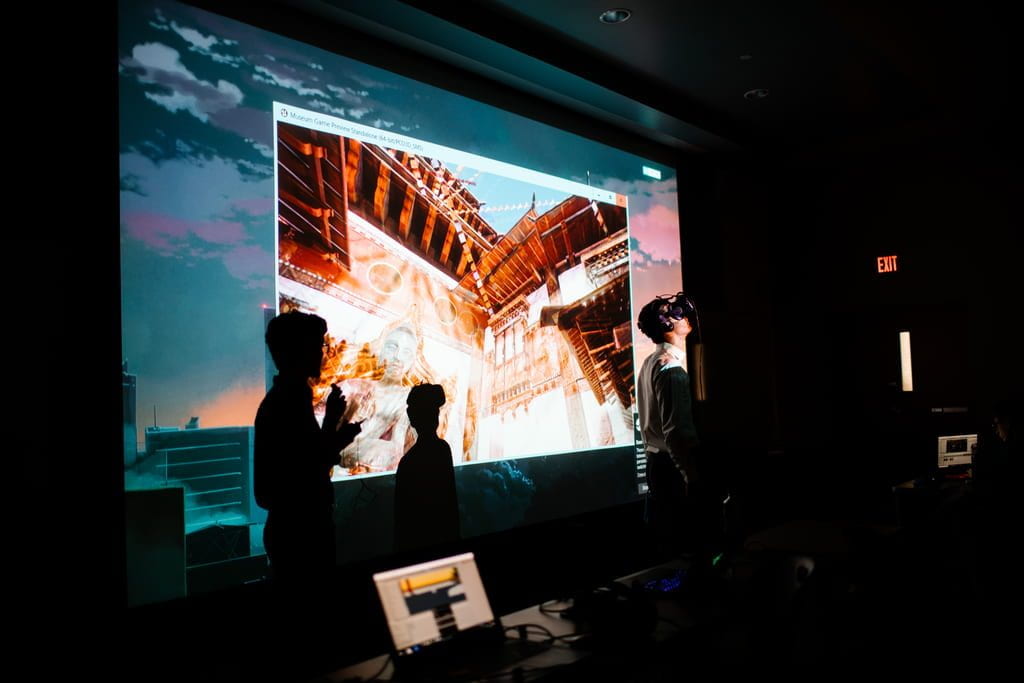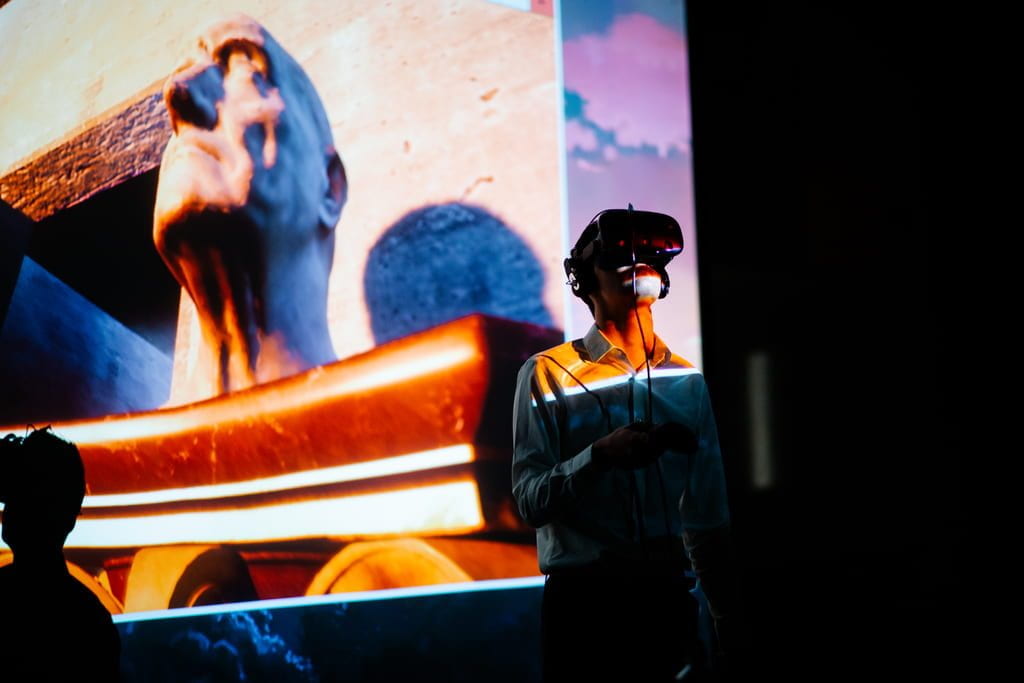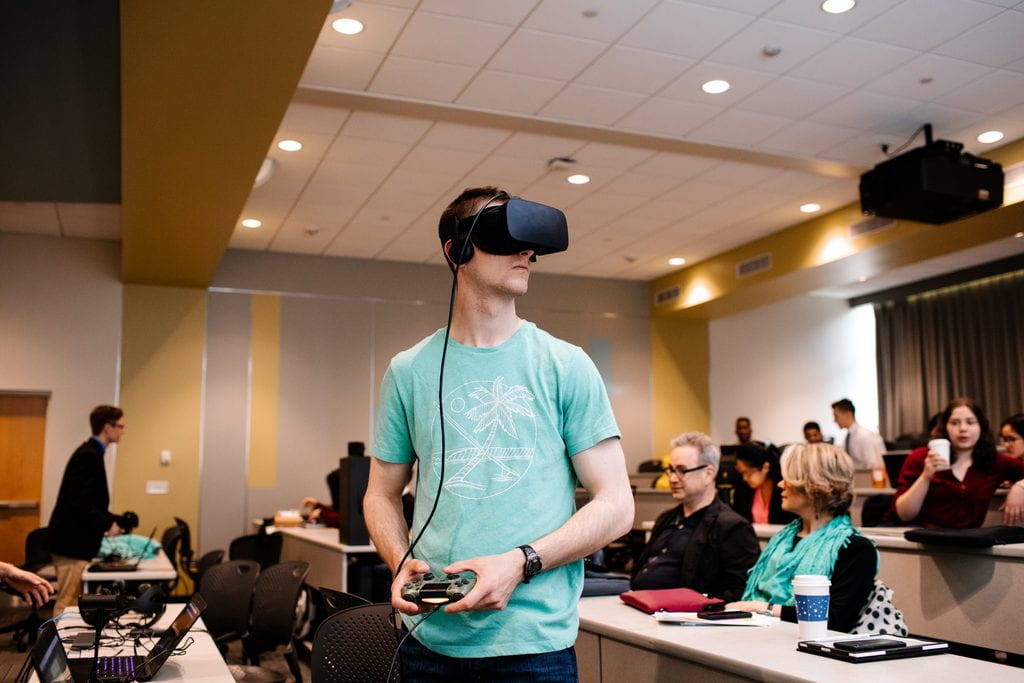Virtual reality as teaching tool
Like many classes at the College, students in Asian Art through VR Gaming listen to lectures. They also don virtual reality headsets to view Asian heritage sites such as a Japanese temple, unbounded by the limitations of physical space — or the price of plane tickets.
“They can experience what it feels like actually to exist within the environment,” said the course’s instructor, Dr. Bing Huang, assistant professor of art history.
During the Spring 2019 semester, students explored architectural sites through augmented reality and 3D modeling. Huang also transformed 2D Chinese landscape paintings into 3D spaces so students could better understand how they contrast with Renaissance linear perspective.
In the class, students experience traditional techniques in the studio themselves, such as ink painting and Chinese calligraphy.
“I believe that the study of art history should not entail simply reading and looking at artwork,” Huang said. “I believe innovation happens when people are having the most fun.”








